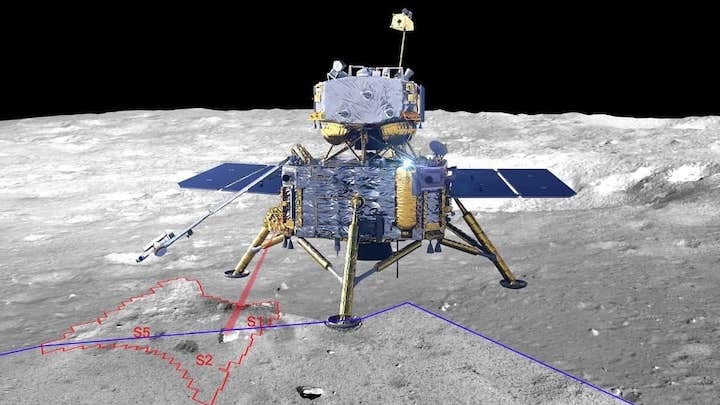21.06.2022

Schematic diagram of lunar mineralogical spectrometer (LMS) of the Chang’e 5 lander, with a spectral range of 0.48 to 3.2 μm. Credit: Liu et al. 2022 / Nature Communications
Finding water on the Moon is crucial not only for providing support for future human lunar inhabitation, but understanding the evolution of the solar system itself. While we knew there were likely to be ice sheets hidden under the Moon’s surface, there has yet to be direct observations of native water… until now.
China’s Lunar Exploration Program lander Chang’e 5 has delivered the first real-time confirmation of water on the Moon. This is in the form of hydroxyl (OH), a minor but important constituent of water besides H2O; and like smoke is to fire, OH is proof of water.
“For the first time, the results of laboratory analysis of lunar return samples and spectral data from in-situ lunar surface surveys were used jointly to examine the presence, form and amount of ‘water’ in lunar samples,” says co-author Li Chunlai from the National Astronomical Observatories of the Chinese Academy of Sciences (NAOC). “The results accurately answer the question of the distribution characteristics and source of water in the Chang’e 5 landing zone and provide a ground truth for the interpretation and estimation of water signals in remote sensing survey data.”
Chang’e 5 did not observe water in the familiar forms of rivers, lakes or oceans, but rather analysed and quantified the OH water signal in the Moon’s mare basalt rocks and soil via on-board spectral analysis.
Importantly, these samples were collected during the hottest part of the Moon’s day, at temperatures of 335-360K (roughly 62-87°C), when the surface would be at its driest, but also when solar winds are low. Why? Because solar winds can contribute to hydration at high enough powers, making native water on the Moon difficult to prove.
In the spectral analyses of 11 rock and soil samples, hydroxyls originated from two different sources – the first being small a glassy material made by solar winds. By taking the measurements near to the Moon’s maximum temperature, the Chang’e 5 samples contained a third the amount of solar-wind generated hydroxyl glass, compared to Apollo 11 samples collected in 1971. The bulk of the hydroxyl detected was contained in a crystalline, phosphate-rich mineral apatite, which is also found naturally on Earth.
“This excess hydroxyl is indigenous, demonstrating the presence of lunar-originated internal water in the Chang’e 5 lunar samples,” says Li. “By investigating lunar water and its source, we are learning more about the formation and evolution of not just the Moon itself, but also the solar system. In addition, lunar water is expected to provide support for future human lunar in-situ resources.”
This research has been published in Nature Communications.
Quelle: COSMOS
